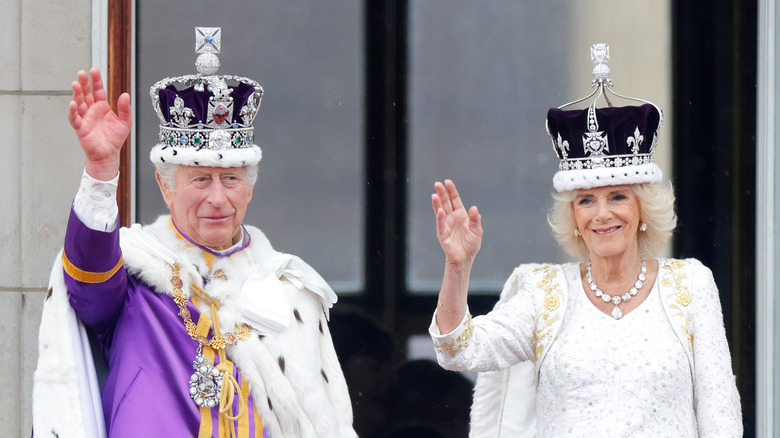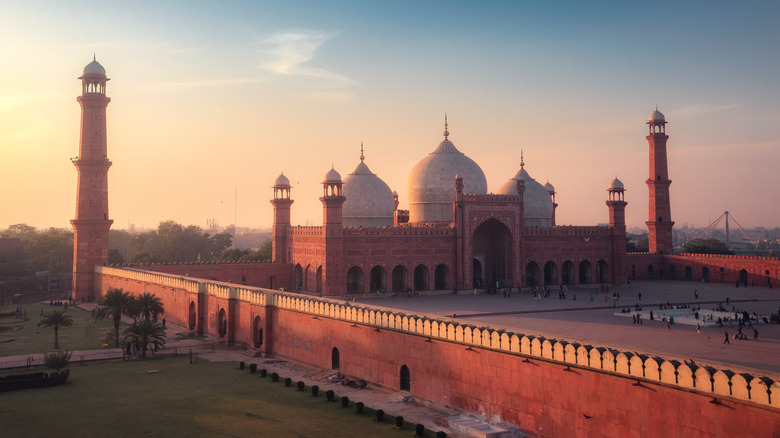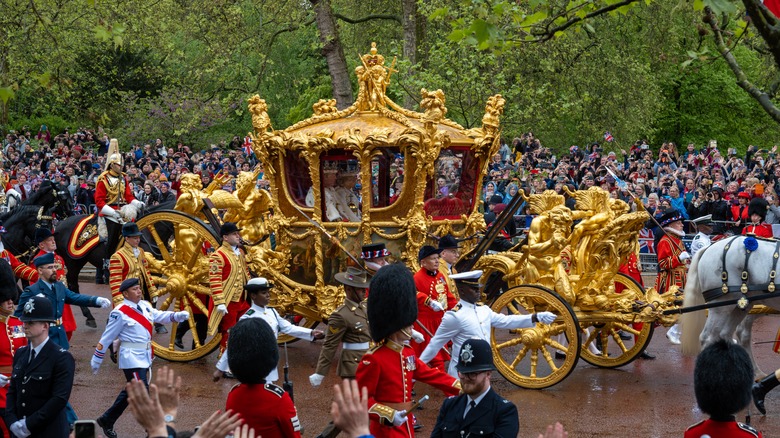Here's Why The Lahore Diamond Is So Controversial
At the coronation of King Charles III, Queen Camilla appeared with some pretty impressive ice. The Lahore diamond, a stunning 22.48-carat stone and one of Queen Victoria's beloved gems, was set into her necklace. However, not everyone was dazzled by the diamond, which has a questionable colonial past. When choosing stones for the coronation the royals tried to avoid controversy by dispensing with the even more impressive 105-carat Koh-i-Noor diamond — but is the history of the Lahore diamond any less murky?
The Koh-i-Noor was handed over to the British by boy ruler Duleep Singh during the British takeover of Punjab, and it was beloved by Queen Victoria before it was eventually set into the crowns of Queen Alexandra, Queen Mary, and Queen Elizabeth. It has been the subject of several lawsuits, and as recently as 2015 a Pakistani lawyer pressed the British to return the diamond. The stone was tactfully removed from the crown before the coronation ceremony, and the palace even made an announcement about it.
However, Camilla's flashy necklace stirred up controversy anyway. As its name suggests, the Lahore diamond is also of Pakistani origin, one of the countless treasures towed home by the British during the colonial period.
The jewel in the crown
The beautiful red-pink city of Lahore is the capital of the Punjab and now part of Pakistan, but it has been fought many times by different emerging empires. The British were able to take advantage of local infighting there, using divide-and-rule tactics to steal more territory.
Lahore officially fell under British control in 1849, but they were already hanging around long before that in the guise of the British East India Company, gobbling up land to the south. For a time, the Punjab was controlled by Sikh Maharaja Ranjit Singh, who formed an alliance with the British to maintain his power. However, when he died — leaving only a small boy in charge — all hell broke loose, and the two Sikh Wars followed.
Britain came out the winner of these conflicts and officially annexed the Punjab for itself. With it passed a considerable amount of loot, part of the proverbial jewel in the crown that was British India. The contents of the Lahore treasury — including the Lahore diamond and the Koh-i-Noor diamond — were handed over by Ranjit Singh's child heir as payment for "war debt," according to the British East India Company's phrasing. The diamond was then officially "gifted" to Queen Victoria, although calling it a gift is perhaps in poor taste, given it was effectively confiscated at gunpoint.
The coronation controversy
Although the Lahore diamond is much less famous than its sister, the Koh-i-Noor, it didn't escape scorn at the coronation. Pakistani actress Ushna Shah drew attention to the stone on Twitter, tweeting a picture of the necklace with an ironic jab: "A sad reality in my opinion: Had all the stolen jewels remained in the subcontinent, especially on our side, would they really have remained the property of the state and protected in a museum? At least this way we get to have another reason to wag our fingers at the colonisers whilst getting to see our heritage in all its glory..on TV...on...them. [side-eye emoji] had they not colonised us in the first place, perhaps these treasures would have remained safe and intact but that's another conversation."
Not everybody understood that the actress' comment was a joke, and her words sparked an angry debate. The necklace also drew comments in the wider media as people argued over the diamond's origins. Thankfully, fact-checking organization Snopes was able to clarify that the Lahore diamond was indeed ill-gotten. Although the Royal Collections Trust mentions that the East India Company gave it to Queen Victoria in 1851, it neglects to mention that before that — it had been in the Lahore treasury.


